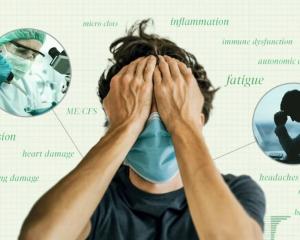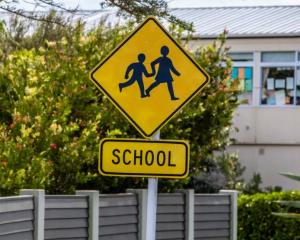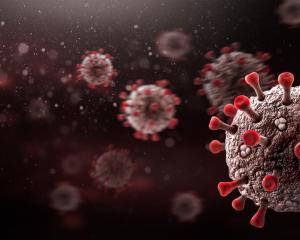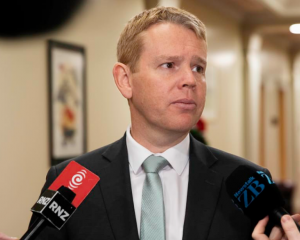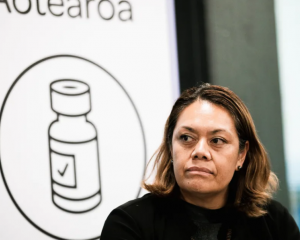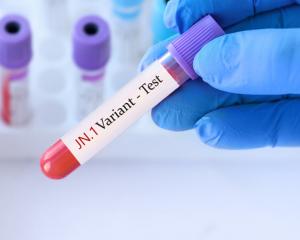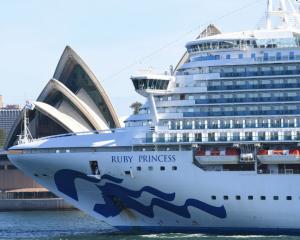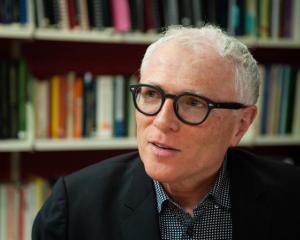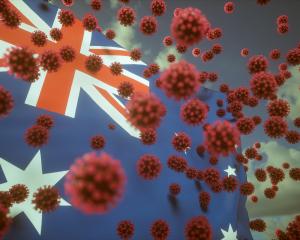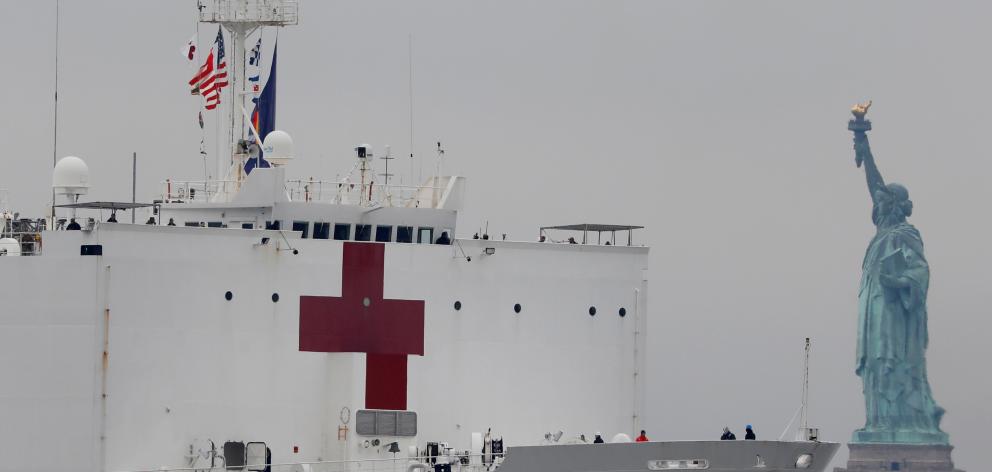
Painted a gleaming white and adorned with giant red crosses, the 1000-bed converted oil tanker sailed past the Statue of Liberty, accompanied by a flotilla of support ships and helicopters before docking at a Midtown Manhattan pier.
People gathered on both the New York and New Jersey sides of the Hudson River to cheer the ship's arrival shortly before midday. Some bystanders chanted, "Trump, Trump, Trump," as the huge vessel neared the pier where it docked.
The Comfort will treat non-coronavirus patients, including those who require surgery and critical care, the Navy said.
"It's a wartime atmosphere and we all have to pull together," said New York City Mayor Bill de Blasio, who was among the dignitaries to greet the ship's arrival. He said preparations for the ship, including dredging, took eight days, much less than the two weeks initially expected.
Hospitals in the city have been overrun with patients suffering from COVID-19, the respiratory illness caused by the virus. New York state accounts for almost half the country's more than 152,000 cases and more than 40% of its more than 2,800 deaths, according to a Reuters tally.
The United States has the most cases in the world.
To ease the pressure, construction of a 68-bed field hospital began on Sunday in Central Park, and the white tents being set up evoked a wartime feel in an island of green typically used by New Yorkers to exercise, picnic and enjoy the first signs of spring.
The makeshift facility, provided by Mount Sinai Health System and non-profit organisation Samaritan's Purse, is expected to be ready to accept patients on Tuesday but will not take walk-ins, and admissions and transfers will be managed by Mount Sinai, de Blasio said.
New York state Governor Andrew Cuomo, one of the most prominent public figures of the coronavirus crisis, told a news conference later that the state might have to step in to close playgrounds in the country's most populous city.
He said official efforts to reduce the numbers of people in those public spaces had not been successful.
Cuomo and de Blasio are among a growing chorus of officials who have voiced frustration at President Donald Trump's handling of the crisis and shortage of ventilators and personal protective equipment needed to fight the virus in hospitals.
"I am not engaging the president in politics," Cuomo, a Democrat, said of Trump, a Republican. "My only goal is to engage the president in partnership."
De Blasio said the death toll in his city would rise if Washington did not provide more assistance soon. “Sunday is D-Day, we need help by Sunday," he told CNN. The mayor, also a Democrat, later thanked Trump for dispatching the Comfort.
CHILLING NUMBERS
US health officials are urging Americans to follow stay-at-home orders and other measures to contain the spread of the virus, which originated in China and has infected about three-quarters of a million people around the world.
"If we do things together well - almost perfectly - we could get in the range of 100,000 to 200,000 fatalities," Dr Deborah Birx, coordinator of the White House's coronavirus task force, told NBC's Today show.
Dr Anthony Fauci, a top US health official, cited those figures on Sunday as a possible outcome, but Birx's assessment appeared to suggest the figures could be a floor rather than a ceiling.
The virus has spread from its original epicentres in Washington state, New York and California.
Authorities in New Orleans were setting up a field hospital at the Ernest N. Morial Convention Center - the same site where thousands of Hurricane Katrina refugees suffered in 2005 - to handle the expected overflow of patients.
Maryland Governor Larry Hogan issued a "stay-at-home" order as cases rose. Virginia Governor Ralph Northam announced on Monday a stay-at-home order for his state.
In nearby Washington, D.C., congressional officials announced that the US Capitol would be closed to the public through April. They had previously said it would be closed until the end of March.
A number of prominent Americans, including several members of Congress, have tested positive for COVID-19.
Renowned country and folk singer John Prine was in stable condition on Monday after being hospitalised with symptoms of the illness, his wife said on Twitter. Prine, a 73-year-old cancer survivor, lives in Nashville, Tennessee.
Trump initially played down the risk to Americans, drawing criticism from health officials and political rivals, including former Vice President Joe Biden, front-runner in the Democratic race to challenge Trump in the November 3 presidential election.
"We allowed the seeds to be planted. And now there is nothing to do but wait for the bloom. A lot of these deaths are already percolating,” said Dana Miller (61) of Belmont, Massachusetts, a retired US government health policy official.
Trump on Friday signed a $US2 trillion ($NZ3.3 trillion) package of emergency measures that helped to soothe rattled nerves on Wall Street, where stocks had fallen sharply. Major US stock indexes were up again on Monday.
Trump abandoned a hotly criticised plan to get the economy up and running by mid-April, extending his original 15-day nationwide stay-at-home order for another 30 days, a step that many Americans accepted with resignation.
“I’m sad to be locked inside, but I think it’s for the best,” said Mia Siracusa (24), a data manager ordered to work out of her apartment in Brooklyn, whose live-in boyfriend is from Italy and whose mother is a New York City hospital nurse.
“I get frustrated when people don’t stay in," she said. "I am frustrated that our federal government didn’t get a handle on this sooner."

